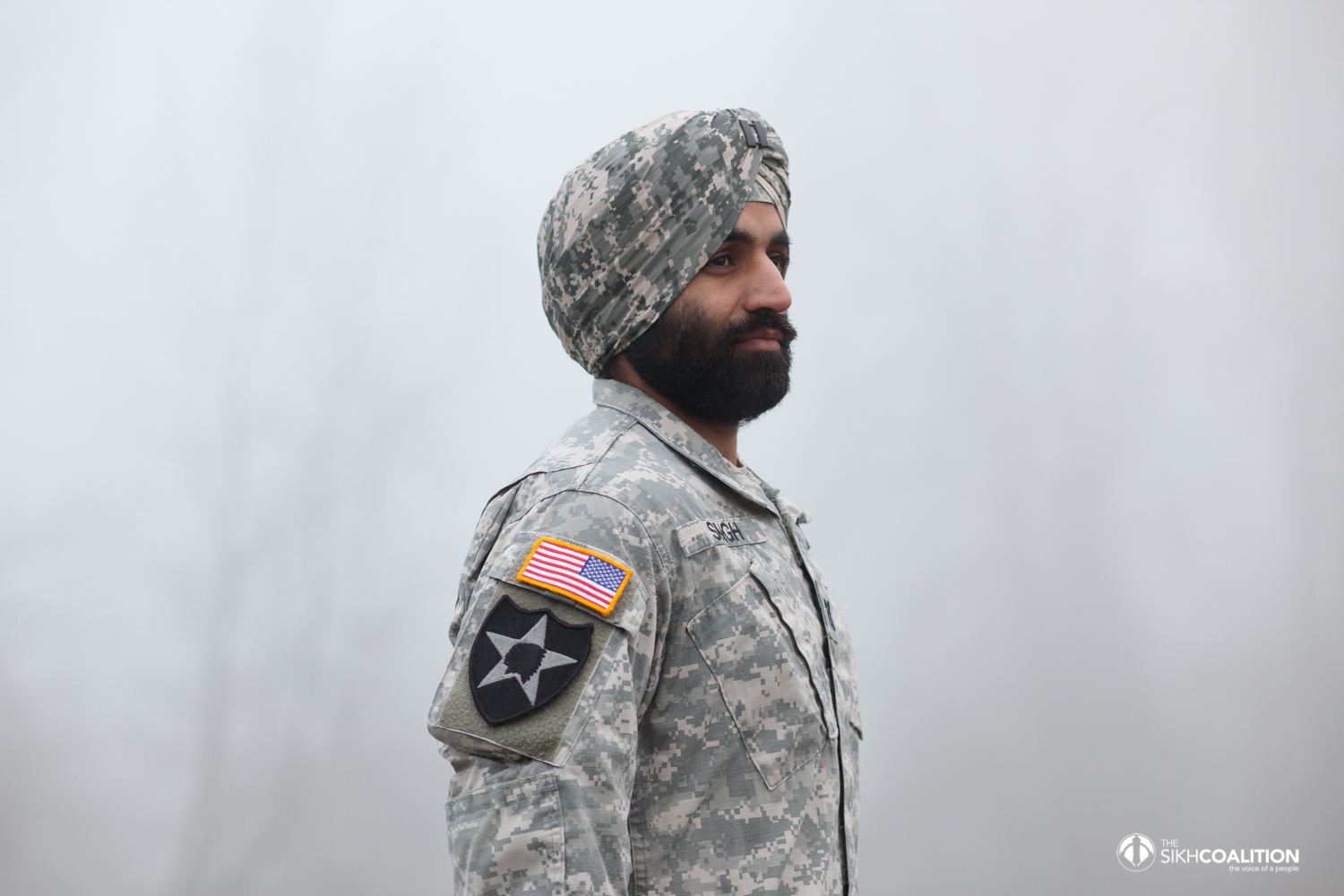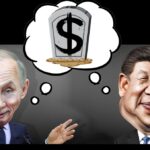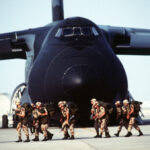
The diversity of America’s Army is a source of power and influence, especially in the political aspects of war and competition.
During the winter of 2007-2008 in Baghdad, I worked with an Iraqi armor battalion to try to improve its performance securing a major thoroughfare. While the tactical results were not memorable, I found the experience impactful experience, leading me to view America’s diversity through the lens of soft power. In a moment of unusual frankness, a young Iraqi major told me that when he saw the American Army on patrol it made him feel shame for his country. He did not feel this for the obvious reasons—American military power, or his nation’s recent defeat. He said that he felt ashamed for his nation because of the diversity of American military units. As a man raised on pan-Arab ideals, believing in the unity of all Arabs, he sadly faced a daily juxtaposition between our cohesive multi-ethnic units and his society shredded by ethnic and religious civil war.
He pointed to the soldiers who escorted me and expressed his amazement at how such a diverse group could fight as such a cohesive and purposeful force. Looking around, I realized that the patrol included soldiers whose families came to America from four continents, and too many nations to count. We would have made a great recruiting ad. In the eyes of my Iraqi peer, that diversity was remarkable and powerful. His shame was fleeting. Afterward, he told me that he felt inspired by America’s example of ethnic and cultural inclusion. It gave him hope and actually reinforced his pan-Arab convictions that Iraqi society could come together once again and find a better future. In those days, on the back end of the surge, what Iraqi soldiers needed desperately was, in the words of Eric Hoffer, an “extravagant hope” for their country.
Of course, Americans have many reasons to feel shame. America has a fraught history of religious, ethnic, and racial violence and oppression. America’s cultural pluralism remains a work in progress. Notwithstanding these difficulties, the diversity of the United States contains a powerful message about the potential for different people to come together in common purpose. For that Iraqi officer, it was soft power. The diversity of America’s Army is a source of power and influence, especially in the political aspects of war and competition.
How significant is diversity as a source of power? What is its relevance to the Army’s mission to “fight and win the nation’s wars.” Happy reflections on military diversity may seem like dubious self-congratulatory messaging that is at worst irrelevant and at best tangential to winning wars. However, dismissing the political significance of diversity is a mistake.
In Paret’s translation of On War, Karl von Clausewitz contended that war is “a true political instrument.” By extension, an army crafted to fight these wars is also a political instrument.
Throughout our history, we have seen many instances in which our army has been used to gain political effects both short of war, and in major conflicts. The Army’s capstone acknowledges the importance of the political aspects of the conflicts in which we engage, stating, “winning battles…is usually insufficient to produce lasting change in the conditions that spawned conflict. Our effectiveness depends on our ability to manage populations and civilian authorities.” In addition, the Army’s operating concept for the future envisions our forces as a “global stabilizing presence” prior to conflict, that “shape[s] security environments through forward presence and sustained engagements.” In post-conflict actions, the concept includes even the “initial establishment of military government pending transfer…to other authorities” as part of the Army’s mission set. If we believe ’s that “the object in war is a better state of peace,” then it stands to reason that in many of the kinds of operations that the U.S. is likely to engage in, it will be useful to model what that better peace might look like.
All of these missions require the use of soft power. Joseph Nye described soft power as “getting others to want the outcomes you want,” through co-option and influence rather than coercion. He continued that the success of soft power “rests on the ability to shape the preferences of others.” In many stability operations (and especially in counterinsurgency and peacekeeping) the Army attempts to persuade diverse groups to resolve conflicts peacefully and to form new, consensual social contracts. This can rarely be done by force in these cases. Short of a Carthaginian peace, coercion rarely produces political solutions. It can disarm (temporarily) and it can get people into a room to talk, but political progress requires that an external coercive agent have an acceptable level of trust and legitimacy in the eyes of the competing parties. In these cases, a positive and consistent message of the power and potential of diversity matters. It speaks to the possibility of a mutually beneficial convergence of interests. American diversity can serve as a kind of persistent information operation, co-opting and influencing people towards the outcomes we desire.
Is this a new concept? No. America has always believed that it projects its values through the lens of soft power. The “city upon a hill” ideal is an old concept that sees America as an influencer of other nations and peoples, an entity whose chief source of power is in its ideas, not its weapons. In his great essay, “The American Century,” Henry Luce built on this idea, writing, “Most important of all, we have that indefinable, unmistakable sign of leadership: prestige…American prestige throughout the world is faith in the good intentions as well as in the ultimate intelligence and ultimate strength of the whole American people.” This reference to “the whole American people” invokes the power of diversity. Thus, American pluralism as an aid to public diplomacy is not a new idea; however, its operationalization within the military context is poorly developed.
Currently, three general approaches are useful for thinking about the importance of diversity in organizations: (1) discrimination-and-fairness; (2) access-legitimacy; and (3) connecting diversity to work. The first, as described by David Thomas and Robin Ely, aims for a workforce that looks like the surrounding population out of a sense of justice and equity. This approach is the basis of many affirmative action and equal opportunity programs. While honest in intent, its focus in practice – demographics – often limits integration and buries conflicts and tensions under the pretense that people are all the same.
The second, the access-legitimacy approach, argues that organizations should seek “a demographically more diverse workforce to help [them] gain access to . . . differentiated segments” of the population. This approach is evident in the Army’s 09L Translator/Interpreter program through which it recruits native speakers of languages other than English to serve during deployments. These soldiers are an important resource; but when not deployed, they are organizationally separated from both the tactical forces and from the more general linguist population that is centered on the Intelligence branch. They serve an access function, but aren’t really integrated into decision-making either during operations or in the broader force.
The third, most integrated approach involves “connecting diversity to work.” This approach focuses on the true integration of a diverse workforce into the culture and key governing processes of an organization to improve its decision-making and level of innovation. The Army officially advocates something closest to this approach. One could, however, argue that a full understanding of policy has yet to catch on at the soldier level.
America has always believed that it represented its ideals through the lens of soft power. … Diversity is not decisive. It is another tool of power, and one that America possesses in abundance. It can be used better.
The concept of diversity as soft power is fundamentally different from all three of these approaches. Both discrimination-and-fairness and diversity connected to work are inward-looking. Discrimination-and-fairness simply seeks internal justice and equity, and reflects concerns about the social instability that arises from perceptions of injustice. Diversity connected to work also acknowledges the importance of justice, and is the most advanced of the three approaches concerning integration; however, its purpose is utilitarian rather than moral. It seeks to improve internal processes to spark innovation and enhance decision-making by looking inward.
In contrast, the access-legitimacy approach looks outward for diversity’s impact. Organizations use diversity to attract clients and gain their trust by grafting diverse elements onto a more homogeneous body. Such efforts only seek to attract clients, not change them. Think of cigarette ads that use African-Americans to develop a racially-focused brand affinity. The latter approach is non-transformative, both for the organization using it and for the target audience it attempts to reach. This is how diversity as soft power offers a distinct way to think about the military uses of pluralism.
Diversity as soft power is inherently different than current theoretical approaches in that it is both outward-looking and it seeks to influence and transform its intended target audience. In my anecdotal example, the Iraqi officer repeatedly observed the functional diversity of an American patrol. He juxtaposed this experience with his observations of his society and his belief in pan-Arabism. It provided a hopeful message that resonated with his belief for a better future, which could inspire positive action for his society. While not as awe-inspiring or tangible as the power of a tank or a fighter jet in action, in the right hands, “dreams, hopes, and visions are mighty weapons and realistic tools” as Eric Hoffer said.
Even if the purported benefits of diversity are real, how significant are they relative to the potential costs of pluralism? As public goods, militaries have both a functional and a social imperative. They must be able to succeed in military operations (functional), and they must do so in a way that appropriately reflects the values and demography of nations they serve (social). Some may argue that too much emphasis on social issues can come at the cost of operational effectiveness. If, however, one considers both the organizational and soft power benefits of diversity there is less tension between the social and functional imperatives.
Regarding operational effectiveness, single, discrete interactions between the target audience and examples of American diversity may only produce minor psychological effects. These effects, however, may be more important than coercive effects for militaries engaged in stability operations and counterinsurgencies. The purpose of such operations is to motivate and influence the will and direction of communities. To deny this premise is to deny the inherently human and political nature of conflict. One small psychological impact may be of little import. Consider, however, the combined effect when the same message is sent out consistently and repeatedly across a whole theater of operations. It has a broad and positive — albeit subtle — influence on the situation. As a bonus, its costs our taxpayers nothing beyond living up to who we are as Americans.
In order to use diversity effectively as power, U.S. forces must be consistent in their message in three ways:
First, the military must be internally consistent. This means actually having a diverse force, rather than one that is diverse in pockets and patches. The military must pursue better institutional integration of diverse elements and an understanding of the benefits of diversity. The Army must educate its whole force better so that the ideals that it espouses actually reach each soldier and are accepted across the force.
Second, the military must be externally consistent. It must be open and inclusive in its treatment of allies and partners, showing respect and open minds as we work together.
Finally, the United States must be contextually consistent. Domestic ethnic, religious, and racial conflicts undermine the positive message of the power of diversity that we might project in our military operations. For the U.S. to use diversity as soft power, it too must live up to its ideals.
Diversity is not decisive. It is another tool of power, and one that America possesses in abundance. It can be used better. To do so, we must acknowledge its variety of uses, especially in the “human domain” of political persuasion. In the emerging international security environment, political legitimacy is taking on more and more significance. The world is watching us. We must pay constant attention to what it sees.
Mike Birmingham is a colonel in the U.S. Army, and a member of the U.S. Army War College class of 2017. The views in this article are the author’s and do not necessarily reflect those of the U.S. Army or U.S. Government.
Photo: Image of U.S. Army Captain Simratpal Singh. Credit: Jovelle Tamayo/the Sikh Coalition. Used with permission.





Hello Colonel Birmingham,
Excellent discussion of soft power and the complexities of diversity!
Mr. Bud Fudlacker: Please consider a few points about diversity in the U.S. military as well as concepts about “traditional war.”
1. According to the DoD 2015 Demographics Profile of the Military Community, with 3.5 million military personnel in the combined DoD and DHS military forces (active and reserve components). Within the active duty components, we have 201,413 women or 15.5 percent. Projecting the gender growth trend into the future, we are quite likely to continue to see the percentages balance out the way demographics in colleges and universities have been balancing with women currently outnumbering men in undergraduate school).
2. History abounds with examples of nations preparing for the last war rather than the next war. The grand Maginot line is a classic example. The French constructed a very impressive Maginot fortress, but the Germans invaded Belgium first and entered France across the Belgium border rather than their shared border along the Siegfried line. Poland had an impressive cavalry but they were no match for German tanks. Great Britain and the “red coats” lined up in orderly fashion, but General Washington was adept at “heading for the hills” and a frosty Valley Forge.
3. FM 2-01.3 entitled Intelligence Preparation of the Battlefield/Battlespace describes the PMESII-PT categories: Political, Military, Economic, Social (cultural, religious, and ethnic makeup within an operational environment), Information, Infrastructure, Physical Environment, and Time. We could either change “Information” to “Information Technology” or add anther “T” for “Technology” (and cyber warfare).
Related to the above points, we could observe that a primary lesson learned in Iraq and Afghanistan was the need for better language skills (Arabic) and increased diversity within our ranks in order to enhance our cultural, religious, and ethnic knowledge. Arguably, we are on the brink of the Second Cold War and brushing up on Russian language skills might be on our horizon. Teaching Chinese and Korean could be increasingly important at our Defense Language Institute. We could probably all agree that we don’t need “diversity training” per se, but we do need to prepare our PMESII-PT with all of the diverse skills and best experts from all corners of the globe. Our soft power certainly includes diversity power.
Piellusch, give me a break. I live in the federal space. Please don’t quote dismal demographic profiles, barf. I spend time with little academy ladies who have been convinced that technology and training will make them top-guns and warriors. They’re so soft and sweet I could just gobble them up.
No one, read my lips, no one from DLI could speak Russian or Chinese well enough to understand, speak to, or fool a native, ponimayu? BudFudlacker is right. Wake up. Diversity is not our strength, it is our major weakness, and our enemies know it.
We haven’t won a real war since WWII. Even then, if the Soviets hadn’t killed 8 out of 10 German soldiers, we wouldn’t have been able to concentrate on the Japanese.